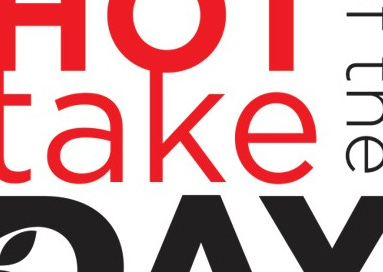Futures are ripping this morning—up 3%—on news of a 90-day trade reprieve between the U.S. and China. Let’s call it “Liberation Day out of Geneva.” Maybe it cools some inflation fears. Maybe it gives Wall Street a reason to cheer, despite valuations at historically lofty levels still. And maybe it even hints at a real deal on tariffs, trade, intellectual property and Taiwan.
But zoom out.
Markets go up. Markets go down. Always have. Always will. Stocks are a voting machine in the short term and a weighing machine in the long term. And right now? They’re voting optimism.
But let’s get real: the average American doesn’t own the stock market.
Yes, technically you might have a 401(k)—but if you’re under 40, it’s a rounding error. And if you’re over 40, you’re still 20 years away from needing it. For most Americans, the stock market is a spectator sport. Something to talk about, not something that changes their day-to-day reality.
You know what does?
Housing.
And that’s where the real story is—because we’re locked in a vice of our own making.
From 2019 to 2023, the U.S. housing market exploded. The median home price jumped nearly 50%, from $275,000 to over $410,000. According to Zillow, in more than 230 U.S. cities, even starter homes—defined as modest, entry-level houses typically under 1,500 square feet, with 2–3 bedrooms—now cost $1 million or more. These aren’t luxury properties. They’re the homes first-time buyers used to afford.
Now? They can’t.
And here’s why: roughly 73% of American mortgages are locked in below 5%. Many are below 3%. Why move, when trading up means trading in your low rate for one nearly double it?
This is the “lock-in effect,” and it’s suffocating housing mobility and price signals from the housing market in general. Buyers can’t afford current prices with current mortgage rates. Sellers won’t list because they’d be stepping into a worse financial position. The housing market isn’t just slow—it’s paralyzed.
At the same time, rents are up 34% in five years. The average U.S. monthly rent rose from $1,149 in 2019 to $1,535 in 2024, while incomes didn’t keep pace. The rent burden is worst for younger Americans—especially those shut out of homeownership entirely.
So what happens now?
Wall Street cheers a tariff pause, and stock indexes leap. But meanwhile, the 10-year Treasury yield quietly ticks higher again today, inching toward the dangerous zone. And that’s not just a market signal—it’s a macro threat.
If long-term rates remain high, refinancing the U.S. government’s ballooning debt gets harder. Interest on the debt becomes a fiscal crisis. And more urgently, mortgage rates stay elevated, locking even more Americans out of homeownership and freezing housing further.
And here’s the demographic kicker: 10,000 Baby Boomers turn 65 every day. That’s not a guess—it’s a mathematical certainty. And many of them aren’t retiring with enough savings. They’re depending on housing wealth, Social Security, and asset stability to carry them. But as home prices stagnate—and worse, fall—while inflation eats through retirement budgets, the cracks start to show. Quickly.
So yes, stock markets may rally today on Geneva headlines. Yes, there may be a short-term tariff reprieve. But until bond yields fall, the U.S. is stuck in an uncomfortable place: rising rents (and painfully low cap rates), locked-in mortgages, unaffordable homes, and a generational demographic shift with no clear escape route.
You want to know where the economy really lives? Not on the Nasdaq. It lives on Main Street. In 1,500-square-foot houses with 3.25% mortgages and $5,000 property taxes.
Watch bonds. Watch housing. That’s where the story is.




You are spot on on this point!
Well that's it. Price of housing is in decline in Colorado. I bought my property back in 2008. It declined in the 08-09 crash by about 20%. Then doubled in value from my original purpose. Now its pulled back 5% as we now have properties in my neighborhood with actual for sale signs. Before that was a formality post COVID.
Meanwhile other smaller markets are still growing. Why? They are still affordable. My hometown, Rochester NY is currently No 1.
https://finance.yahoo.com/news/a-midsize-city-in-upstate-new-york-is-the-countrys-toughest-housing-market-this-spring-143308210.html
But the other main factor is supply and demand. No one has been building those entry level homes. Why? because the cost to build doesn't provide enough value to the builder as opposed to larger properties. Throw in tariffs on building materials, like lumber from Canada, and deportation of cheap labor, and the builders are going to punt.
Interest rates aren't coming down until inflation is shown to be under control. And the tariffs are driving it, despite what the administration says. The other cost you failed to mention is insurance rates are going through the roof in many places. You can't get a mortgage without it.